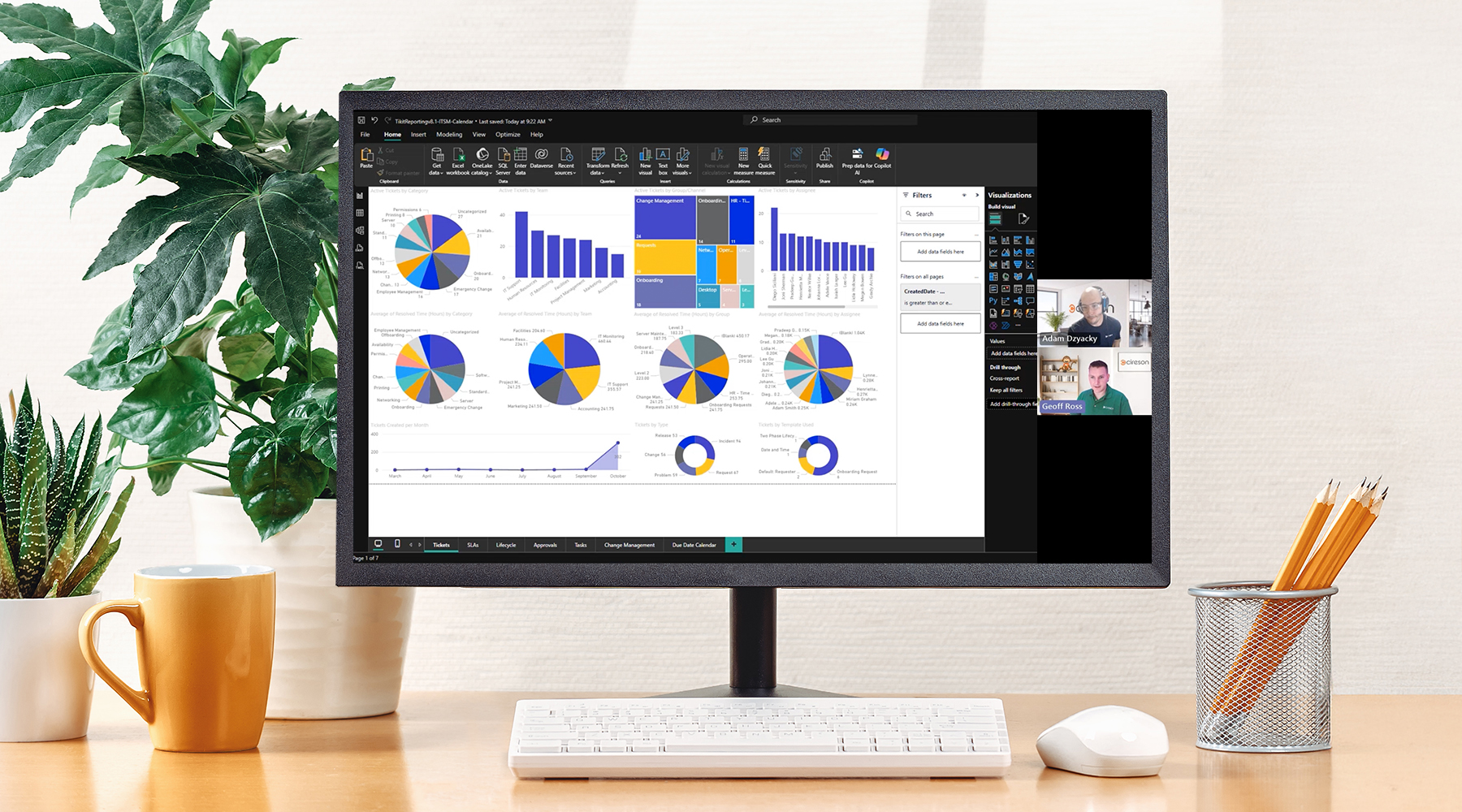Building dashboards shouldn’t feel like you’re chasing an endless list of “what about…” requests. In this live webinar, we’ll share best practices for building dashboards in Tikit that solve the needs of today, stay flexible for tomorrow, and are easy for anyone in your organization to use.
See how to:
- Capture requirements without over-engineering your dashboards
- Use filters and slicers to make dashboards more interactive and adaptable
- Visualize ticket data by location, priority, department, or customer trends
- Avoid “cornering yourself” into overly specific dashboards you can’t easily adjust later
- Build dashboards that scale with your organization—and still make sense to others who use them
Whether you’re building your first dashboard or refining existing ones, this session will help you strike the right balance between powerful insights and long-term flexibility.
Transcript Summary
In this webinar, Adam Dzyacky and Geoff Ross demonstrated how to design meaningful, flexible dashboards in Tikit using Power BI. The session focused on capturing requirements effectively, structuring visuals for clarity, and avoiding the pitfalls of over-engineering dashboards that are difficult to maintain.
Key Takeaways
1. Start with the Right Questions
Before building, identify what stakeholders actually need to see—and why. Dashboards should drive action and improvement, not simply display data. Adam and Geoff emphasized understanding “what decision does this visual help make?” to avoid clutter and unnecessary metrics.
2. Capture Requirements Without Overcomplicating
The presenters recommended gathering input from teams early and focusing on measurable outcomes. Using too many fields or filters can lead to confusion and dashboard fatigue. Instead, begin with simple visuals that align with core KPIs, and iterate as business needs evolve.
3. Use Filters and Slicers to Enable Exploration
Rather than building separate dashboards for every scenario, leverage filters and slicers. These allow users to dynamically adjust views—by location, department, or priority—without needing new reports for each variation.
4. Incorporate External Data Sources
Adam demonstrated how to merge data from external systems such as HR CSV exports to enrich insights—for example, correlating new-hire start dates with ticket activity to identify onboarding challenges. Power BI’s “Merge Queries” feature can connect Tikit ticket data with additional datasets for deeper analysis.
5. Avoid “Cornering Yourself”
Hardcoding logic or visuals can limit future flexibility. Keep dashboards adaptable by using relative filters (e.g., “last 30 days”) and modular visuals. This makes maintenance easier as your environment or processes change.
6. Visualize Meaningfully
While charts and graphs provide quick insights, traditional table views remain valuable. Adam showed how to create tables listing ticket details, requester information, and direct links to the Tikit agent portal—all of which respect filters applied in the dashboard.
7. Automate Reporting and Sharing
Teams can publish dashboards to Power BI Online or Microsoft Teams for live access. Additionally, Power Automate connectors can trigger email reminders or scheduled refreshes—ensuring stakeholders always see current data.
8. Connecting Form Data and Templates
Yes, Power BI can pull data from Tikit’s template and custom form fields. Adam noted that duplicating and filtering data by template type provides cleaner, more relevant reporting views.
9. Align Dashboards with Actionable Insights
Geoff reminded attendees that dashboards are only valuable if they lead to improvement. Whether highlighting process bottlenecks or training gaps, each visual should tie to a business outcome or next step.
Support and Follow-Up
Attendees were encouraged to reach out for further assistance or walkthroughs on custom fields, Power BI setup, or dashboard optimization.
For questions or support, contact help@cireson.com or connect with the Tikit team on Microsoft Teams.
Tikit is a Microsoft 365 IT Service Management platform that matures with your M365 adoption. Want to learn more about Tikit? Check out our demo video and try Tikit in a 14-day free trial. We are so confident in Tikit’s capabilities, we’ll even set it up for free to ensure you are getting the most out of your free trial! Schedule your complimentary setup call today.


